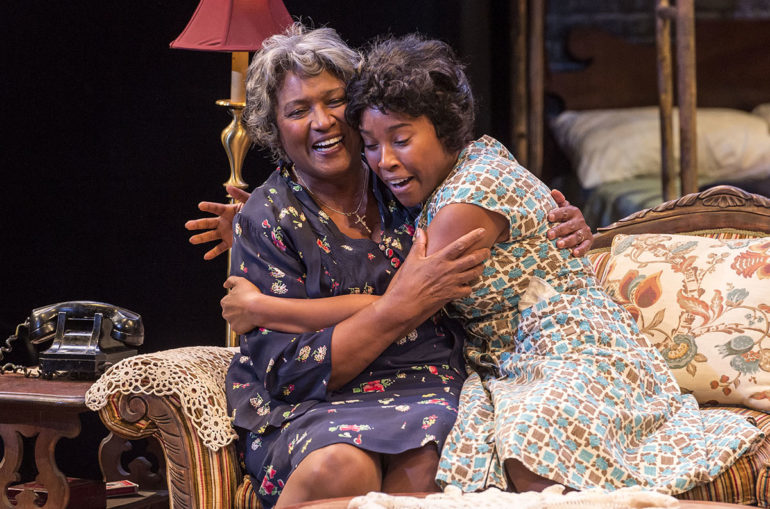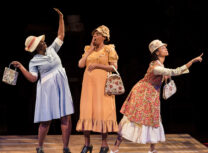Celebrate Lorraine Hansberry for Women’s History Month

By A Noise Within
March 7, 2018
Born Black and female on the Southside of Chicago in 1930, Lorraine Hansberry is best known for her masterpiece and first play, A Raisin in the Sun. After its opening in 1959, Hansberry was the first Black person, the fifth woman, and the youngest person ever to receive the New York Critic’s Circle Drama Desk Award.
A Raisin in the Sun takes place on the Southside of Chicago and features a struggling Black family trying to move to the white suburbs to create a better life. Hansberry’s own father challenged a restrictive covenant designed to enforce segregation when Lorraine was young. The case, Hansberry v. Lee, went all the way to the Supreme Court. As a result, racists specifically targeted the Hansberry family. The end of the final produced version of A Raisin in the Sun features the Younger family leaving their Southside home to face an uncertain future in the suburbs. An earlier, unpublished version of the play resolves with the Youngers huddled in their new home as a violent racist mob descends—the likes of which Hansberry had seen firsthand in her youth.
As a Black woman with ties to the LGBTQ community, Hansberry was no personal stranger to oppression. Her philosophy was that Black people and their allies should resist racism by any means necessary: “legal, illegal, passive, active, violent and non-violent.”* She lived her life by this creed, and during her later years in New York used her incredible skill with words to contribute to the Pan-African newspaper Freedom, under publisher Paul Robeson. Hansberry’s contemporaries included great thinkers and activists like W.E.B. De Bois and James Baldwin.
Despite dedicating her life’s work to the cause of liberty, not only for Black people but for women and the LGBTQ community, Hansberry’s writings reveal she still wrestled with whether her activism was enough. Before she could give her body or her comforts to the struggle, Hansberry’s life was ended suddenly by cancer at the age of 34. She wrote her final play, The Sign in Sidney Brustein’s Window, as she lay sick. It is rich with feminist, anti-racist, and LGBTQ themes, encompassing many of Hansberry’s personal philosophies, namely: “The ‘why’ of why we are here is an intrigue for adolescents. The ‘how’ is what command the living. Which is why—I have lately become an insurgent again!”**
Hansberry was survived by her ex-husband Robert Nemiroff, whose family still stewards Hansberry’s legacy. The Nemiroff’s have established the online resource called the Lorraine Hansberry Literary Trust, an archive of Lorraine Hansberry’s words, thoughts, images, and immeasurable impact. A Noise Within is honored to perform A Raisin in the Sun, and we hope our production makes Hansberry’s masterful words and and urgent themes resonate today.
*Lorraine Hansberry, letter to white southerner Kenneth Merryman on April 27, 1962. In To Be Young Gifted and Black: Lorraine Hansberry in Her Own Words. Adapted by Robert Nemiroff with an introduction by James Baldwin, p.213–214. NJ: Prentice-Hall, 1969.
**Sidney to David, Act II, Lorraine Hansberry, The Sign in Sidney Brustein’s Window with an Introduction by Robert Nemiroff. NY: Vintage, 1995.








